It seems we can’t find what you’re looking for. Perhaps searching can help.
Sign Up for newsletter!
Subscribe to get the latest eBook!
Hotline






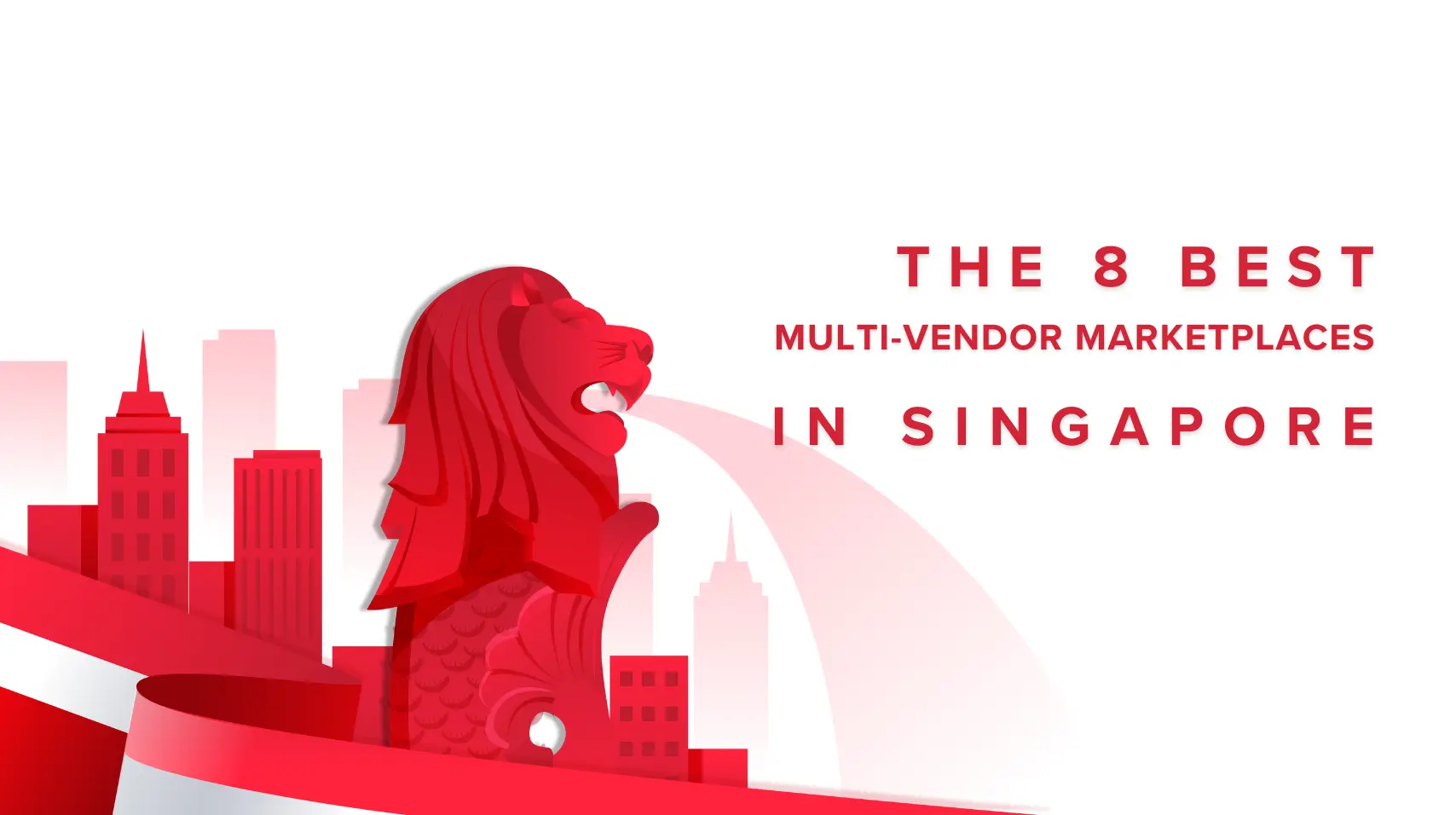
The Singapore multi-vendor marketplace market is booming, with stiff competition from Western giants like Amazon and eBay, as well as trusted local brands such as Shopee and Lazada. Statista reports that in 2023, the industry’s revenue reached $4.45 billion and is projected to hit $5 billion in 2024 and $8.2 billion by 2029. In this context, identifying and understanding the leading online marketplaces in Lion City is crucial for maximizing potential and opportunities in this rapidly evolving market.
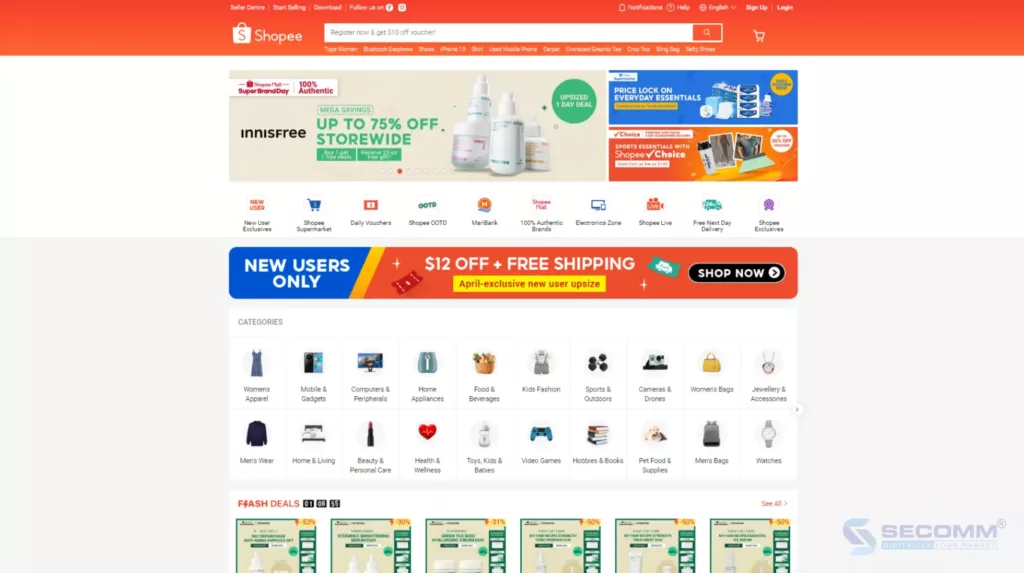
Shopee Singapore is one of the leading multi-vendor marketplaces not only in Singapore but also throughout the Southeast Asia region. The range of products available for purchase and sale on the Shopee platform is quite diverse, spanning from consumer goods to fashion, electronics, toys, and much more. Shopee Singapore is renowned not only for its convenience and flexibility in the online shopping process but also for its attractive promotional programs and fast delivery services. With its open and user-friendly business model, the eCommerce marketplace has become a popular destination for people looking for quality products at reasonable prices.
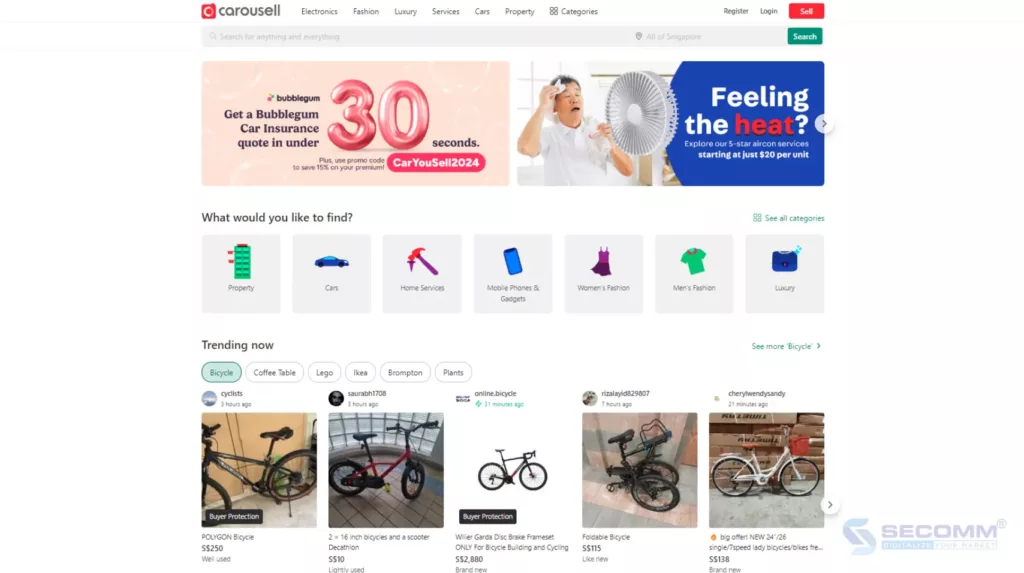
Carousell, a well-known online marketplace based in Singapore, offers a stylish and personalized online shopping experience. It specializes in enhancing the buying and selling process both on its website and mobile app. What makes Carousell stand out is its wide range of unique items available. Beyond just new products, Carousell also serves as an eCommerce marketplace for secondhand items, spanning from clothing and electronics to household goods. This creates an engaging shopping environment for those in search of one-of-a-kind items or looking to recycle goods.
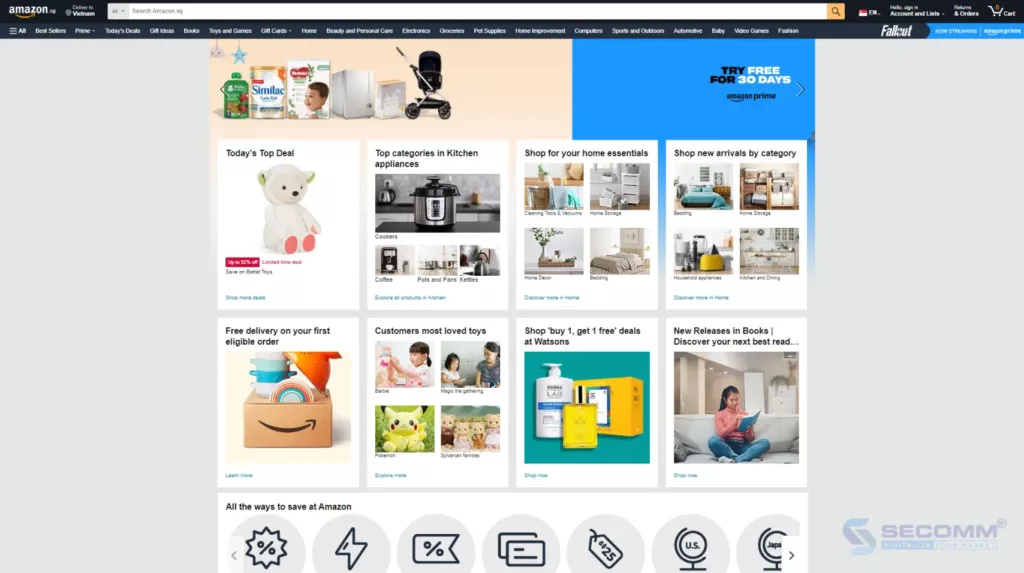
When expanding into the Singapore market, retail giant Amazon brought a top-notch and diverse online shopping experience to local customers. With an extensive array of products spanning from consumer electronics to books, fashion, household items, electronics, and cosmetics, Amazon serves as the preferred destination for customers seeking quality and variety.
A key strength of this multi-vendor marketplace lies in its reliable shipping infrastructure and customer service. With a widespread distribution network and efficient delivery services, Amazon ensures convenient and prompt product deliveries for buyers. Additionally, Amazon’s customer support service is highly regarded, as the company strives to address inquiries and issues from both sellers and buyers promptly and effectively.
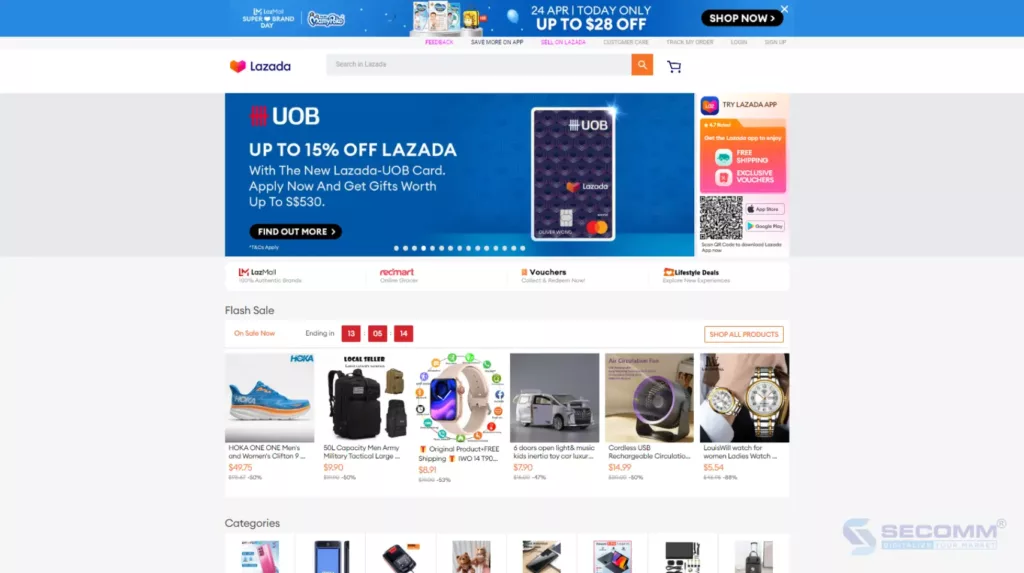
Lazada is one of the major players in the eCommerce world, winning over the trust of Singaporean consumers with its diverse range of services and products. Since being acquired by Alibaba, Lazada has experienced significant growth and strengthened its position in the Southeast Asian market. Today, Lazada serves not only as a platform for major brands but also as a gateway for small and medium-sized enterprises to enter the market effectively. Moreover, the online marketplace is renowned for its enticing promotional offers and swift delivery services. The incorporation of labels like “LazMall” and “LazGlobal” further simplifies the process for customers to discover and purchase quality products from brands worldwide.
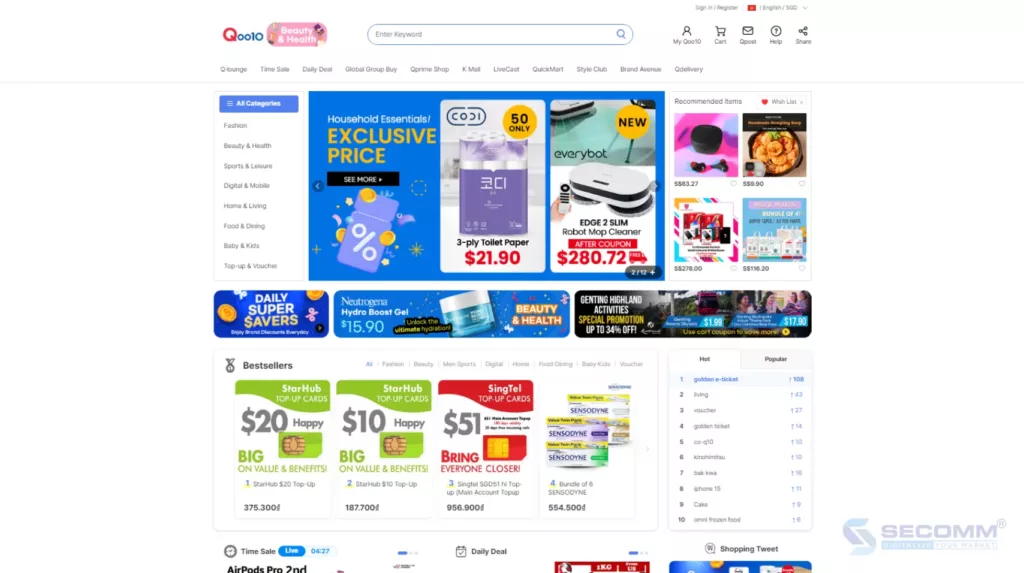
Qoo10, also known as Gmarket, stands as one of Singapore’s most popular and reliable eCommerce marketplaces. With its diverse range of online storefronts, Qoo10 offers users a stylish and varied online shopping experience.
A standout feature of Qoo10 is its emphasis on products from small and medium-sized retailers. Rather than focusing solely on major brands, Qoo10 provides a platform for small and medium enterprises to easily and effectively access the market. This creates a welcoming and diverse shopping environment where buyers can discover unique and high-quality products from smaller manufacturers and brands.
Moreover, the online marketplace is well-known for its appealing promotional programs and fast delivery services. The user rating and feedback system further bolsters trust and transparency in the online shopping process on this platform.
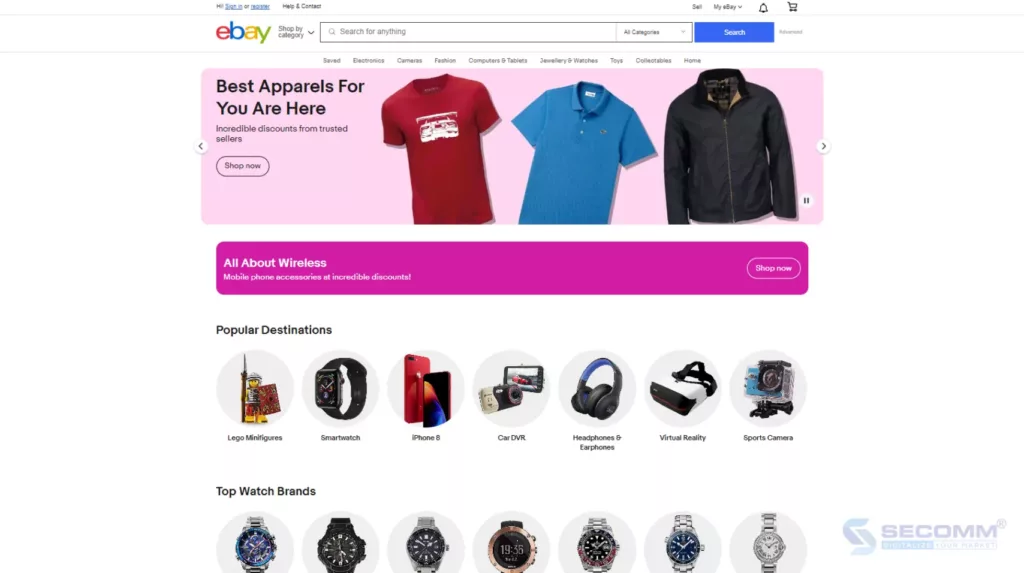
eBay is a well-established and trusted name in the global eCommerce landscape. It has won over Singaporean consumers with appealing and efficient online shopping experiences. eBay Singapore is renowned for its ability to connect buyers and sellers worldwide, creating a vast global online marketplace. With millions of items available for sale on the platform, ranging from brand-new to gently used products, customers can easily discover items that suit their needs and budgets.
Furthermore, the multi-vendor marketplace offers customers flexibility in payment and delivery options. Customers can opt for popular payment methods like PayPal or credit cards and also take advantage of international shipping services to have their purchases delivered directly to their doorstep.

Zalora is a popular multi-vendor marketplace in Singapore, offering fashion and style products from both local and international brands. With its diverse array of items spanning from apparel, footwear, and accessories to jewelry and cosmetics, Zalora has become the go-to destination for fashion enthusiasts seeking to express their unique style. What sets Zalora apart is its dedicated focus on the fashion and style market, delivering users a flawless online shopping experience in this realm. Beyond just a platform for purchasing products from renowned brands, the eCommerce marketplace serves as a hub for individuals to explore and cultivate their style.
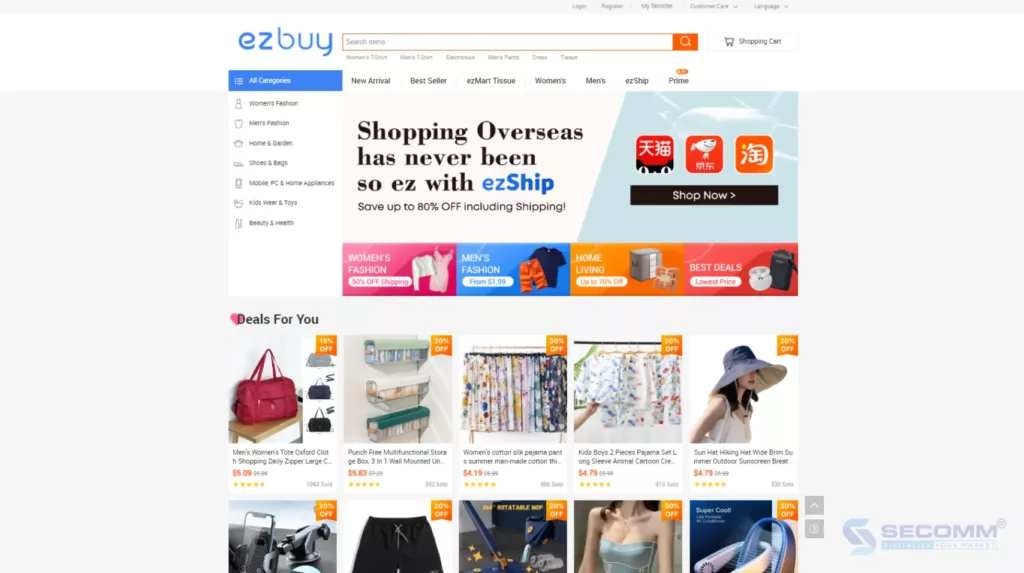
The online marketplace EZbuy is renowned for its convenient and cost-effective international shopping services. With EZbuy, customers can easily access and purchase hundreds of thousands of products from China, Korea, the US, and many other countries at reasonable prices with convenient shipping services.
Operating as an intermediary shopping model, the EZbuy eCommerce marketplace helps users circumvent complications related to import taxes, international shipping fees, and complex customs procedures. Instead of handling these procedures themselves, users can effortlessly shop for products from overseas through EZbuy and conveniently await delivery at home.
In summary, the Singapore eCommerce market is thriving with a variety of top-tier multi-vendor marketplaces. Each platform offers unique features and the best services to meet the shopping needs of customers. The success of these giants serves as motivation for many businesses to join and lays the groundwork for further development of the eCommerce market in Singapore in the future.
Need more advice for multi-vendor marketplace development? Contact SECOMM today!
 16
16
 2,449
2,449
 0
0
 10
10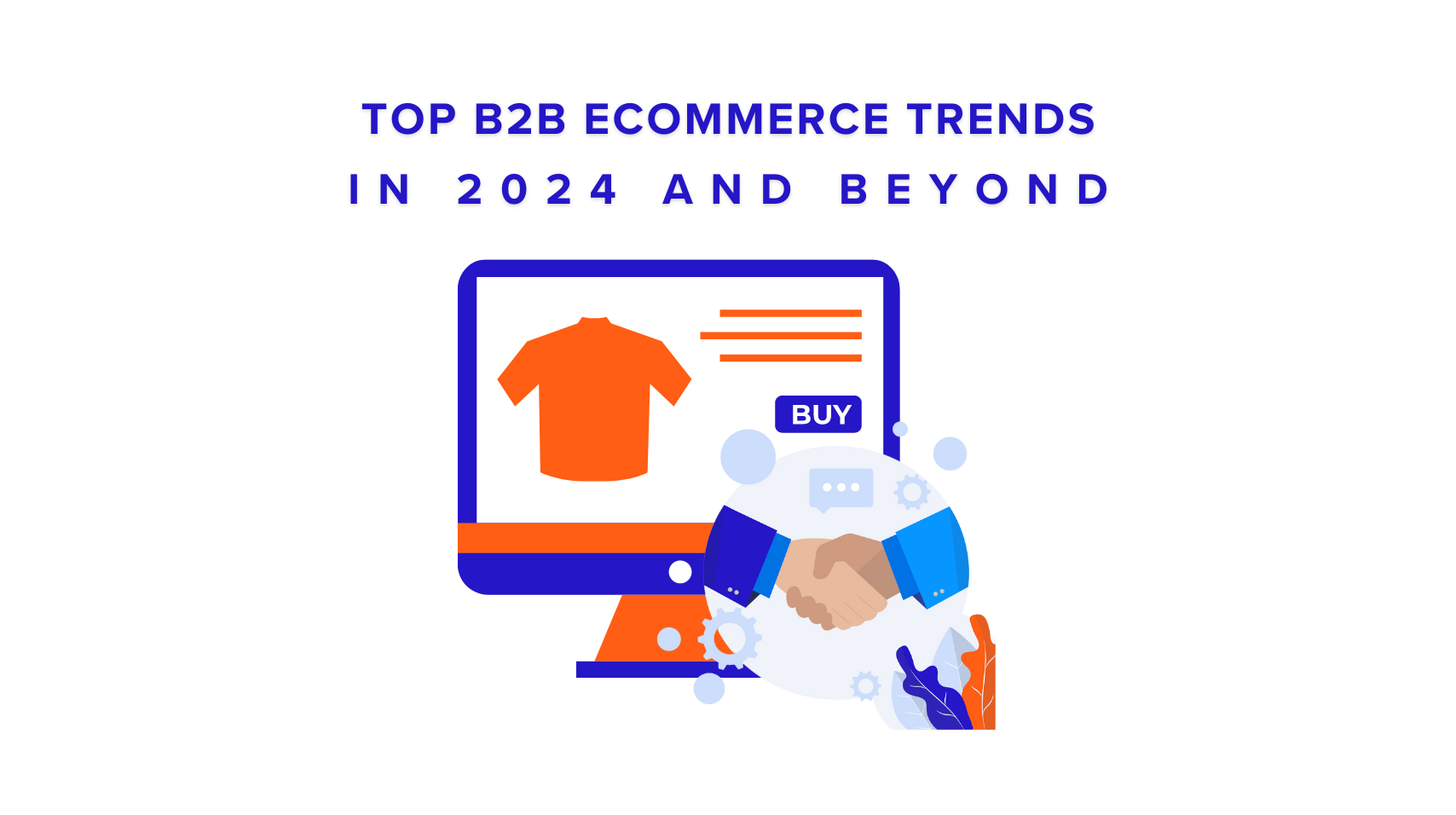
In the current B2B market, buyers are becoming more tech-savvy, mirroring the independent purchasing patterns of B2C consumers. This shift is driven by the changing demographics of B2B buyers, with 64% being Millennials and Gen Z, according to Forrester. Moreover, Gartner notes that 44% of Millennials prefer to make purchases without the involvement of sales representatives.
As a result, B2B eCommerce trends are rapidly evolving, influenced by both consumer behavior and technological progress. The increasing integration of generative AI into eCommerce, and the merging of online and offline experiences, are all pivotal trends. Keeping pace with these developments is essential; otherwise, businesses risk lagging in the fiercely competitive B2B eCommerce landscape.
In this article, let’s explore the top 8 B2B eCommerce trends that will shape the industry in 2024 and for many years to come.
AI is making big strides in online shopping. AI chatbots are now a key part of customer service, offering personalized assistance and product suggestions. For example, Shopify Magic has AI tools that help create content and provide tailored shopping advice.
Chatbots are widespread, with over 1.4 billion people interacting with these AI systems worldwide. Retailers who have adopted AI have seen a significant increase in sales. It’s predicted that by 2027, 80% of retail leaders will use AI to enhance efficiency in their operations.
Beyond retail, AI is set to make a major impact on the economy. PwC estimates that AI could contribute as much as $15.7 trillion to the global GDP by 2030, affecting many industries.
Businesses are increasingly turning to automation to improve efficiency without growing their teams. According to Markets and Markets, the marketing automation industry is expected to grow from USD 5.2 billion in 2022 to USD 9.5 billion by 2027, with a 12.8% yearly growth rate. Additionally, 57% of companies plan to use automation to make their employees more productive.
Shopify Flow is a tool that automates routine tasks for businesses. It activates specific actions based on rules set by the user, simplifying the workflow.
With the rise of AI and automation, businesses are increasingly embracing an omnichannel strategy. This trend allows for seamless interaction across various channels, helping companies to be more budget-efficient in managing both their online and physical storefronts, ultimately enhancing customer satisfaction.
Data shows companies with robust omnichannel engagement retain 89% of customers, compared to 33% for those without. Additionally, 59% of consumers prefer self-research over interacting with sales-focused staff, highlighting the need for sales teams to prioritize customer guidance. Moreover, establishing a solid omnichannel base is essential, followed by streamlining all digital touchpoints for a unified and efficient customer journey. You can learn more on how to build an effective omnichannel strategy here.
In B2B e-commerce, the harmony of digital touchpoints is essential for delivering an exceptional customer experience and driving sales. Integrating all digital channels, such as payment systems, online stores, and customer support, is crucial. This integration provides a unified customer profile, streamlining management across multiple channels and focusing on omnichannel sales.
Streamlining transcends mere system connections; it ensures seamless data flow for personalized customer interactions. For instance, leveraging browsing habits for advertising and purchase history for customer service can develop comprehensive customer profiles.
Ultimately, streamlining is about fostering a consistent, reliable customer experience that bolsters brand interaction. Companies excelling in this are well-positioned for enduring success in the competitive B2B e-commerce market.
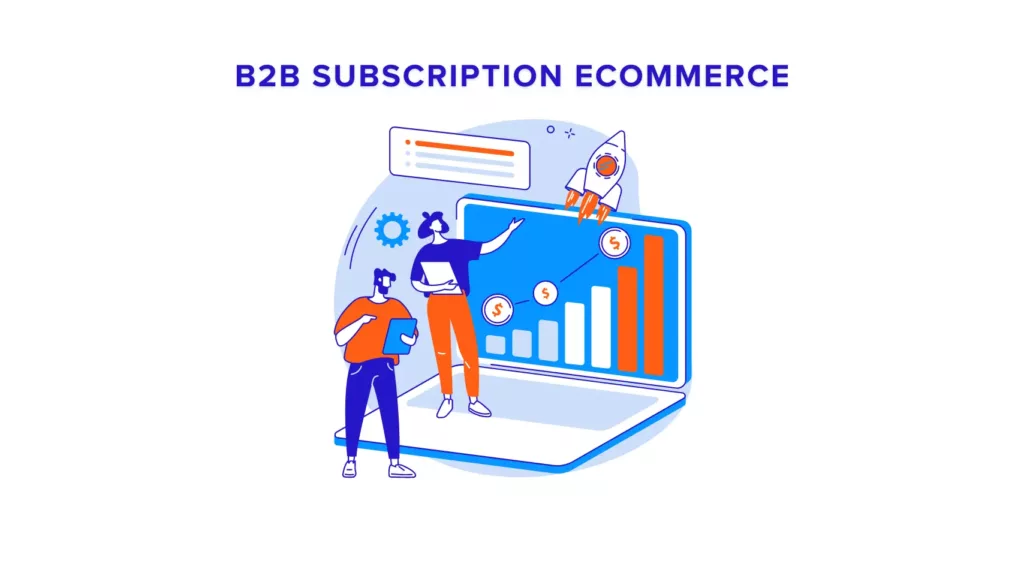
Subscription models are becoming vital for customer loyalty in B2B eCommerce, with the Global Subscription eCommerce Market expected to hit US$ 478 billion by 2025. These models offer a predictable revenue stream and deepen customer relationships beyond one-time sales. They cater to various business needs, from product supplies to software services. Moreover, as buying habits shift online, subscriptions align with customer preferences for self-services and problem-solving services.
Moreover, businesses often find that prioritizing the enhancement of the customer experience yields better results than constantly pursuing new leads. In the B2B sector, nurturing existing relationships and promoting additional purchases can be more profitable strategies than seeking out new customers. Find more about subscription eCommerce here.
Headless architecture is a way of building online stores where the front-end and back-end work separately but talk to each other through an API. This setup lets the back end hook up with any front end, making it perfect for businesses that sell across different channels.
Looking ahead to 2024, headless B2B eCommerce is on the rise. It’s not going to replace traditional eCommerce completely, but it gives businesses a leg up by being more adaptable, integrating better with other systems, scaling up easily, and making life easier for developers. All this leads to a better experience for business customers. The headless commerce market is booming; it’s expected to grow to $32.1 billion by 2027, with a yearly growth rate of 20.5%. You can find more information about headless eCommerce here.
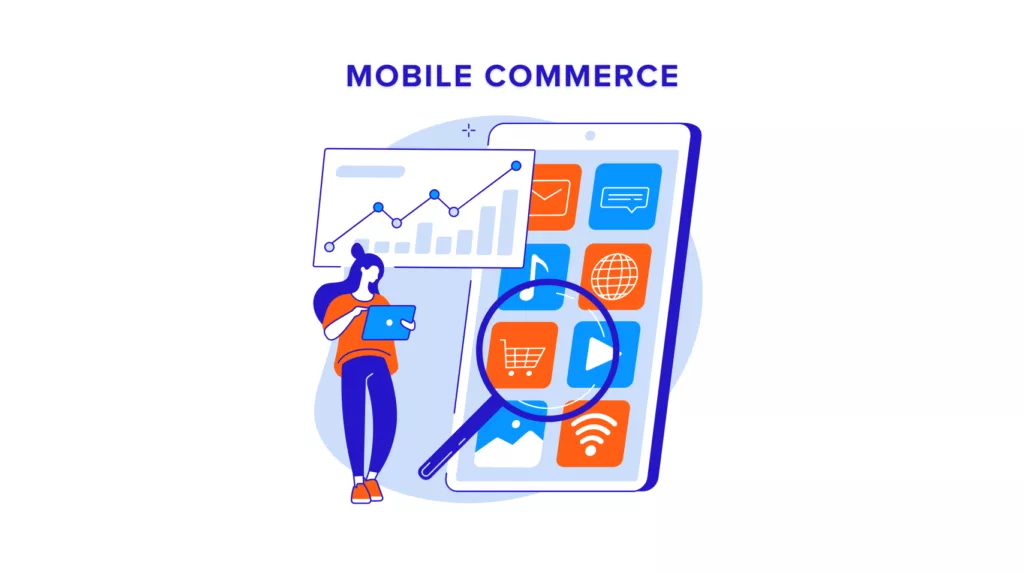
The trend of using mobile phones for online shopping is on the rise, primarily due to the advancements in online payment systems. This shift is attributed to the seamless buying experience provided by mobile commerce, where customers are quickly redirected to payment apps like MoMo or ZaloPay, offering a hassle-free transaction compared to traditional website payments that require them to pick up their phones for the payment process.
Furthermore, mobile devices are leading the charge in the B2B digital commerce evolution, with a significant majority of consumers preferring them over desktops and tablets. This growing preference underscores eCommerce platforms’ importance in crafting responsive and well-tuned mobile shopping experiences.
To leverage this trend, eCommerce sites need to go beyond mere mobile-friendliness and aim for mobile optimization. This involves designing interfaces that facilitate thumb-friendly navigation, expediting the checkout process, and ensuring swift site loading times. By concentrating on these aspects, eCommerce sites can become preferred shopping destinations, boosting online sales. In the realm of mobile commerce, the ease and speed of the shopping experience are directly proportional to the likelihood of completing a sale.
The B2B eCommerce sector is rapidly adopting digital efficiency in payment processes. Automation and advanced digital transactions are replacing traditional methods, significantly reducing operational costs and manual labor. This modernization benefits both companies and customers, offering a more streamlined payment experience.
In the dynamic realm of B2B eCommerce, the transition from traditional payment methods to automated and advanced digital transactions is accelerating. A study by Markets and Markets highlighted that adopting automated payment systems can reduce operational costs for accounts receivable departments by 50% and cut down manual tasks by 85%. This evolution is beneficial not only for businesses but also for customers, who now have the convenience of making payments at their own pace, thus enhancing the overall payment experience.
The proliferation of mobile technology has revolutionized both shopping and payment behaviors. As smartphones become integral to the consumer journey, offering various payment options, including digital wallets like Apple Pay or Samsung Pay, has become essential. The year 2024 will mark a point where not accommodating such payment methods could be detrimental to customer retention.
The ‘Buy Now, Pay Later’ (BNPL) model is emerging as a significant trend, particularly in Vietnam, where it’s a departure from the traditional installment payments. Platforms like Shopee are incorporating BNPL, indicating its potential to reshape the B2B payment landscape significantly.
In the US, Buy Now, Pay Later (BNPL) has won over more than a third of consumers recently, and it’s also gaining traction in Europe and Africa. This surge is tied to shifts in how people, particularly the younger crowd, prefer to manage their money, with BNPL’s flexible and wallet-friendly options being a hit. Gen Z is leading the BNPL charge, as they’re stepping into the workforce in big numbers. The trend shows that BNPL use among Gen Z is set to grow from 36.8% in 2021 to 47.4% by 2025. You can read more about BNPL here.
Augmented Reality (AR) is transforming B2B eCommerce, turning simple spaces into interactive showrooms. With AR, businesses create 3D models that customers can explore in detail, offering an engaging experience far beyond what static images can provide.
Vietnam is riding the AR wave with remarkable vigor. The market is booming, with forecasts predicting a surge from US$96.4 million in 2023 to US$181.5 million by 2028, thanks to an impressive annual growth rate of 13.48%. AR is already a hit in children’s books and playgrounds, but it’s set to become a staple in our everyday lives, moving beyond novelty to become a standard in our daily routines, especially in the B2B eCommerce market, much like the memorable Oreo campaign during Tet 2020.

Wrap Things Up!
B2B eCommerce is booming, outpacing traditional stores. This surge is driven by digital advances and the economic shift after the pandemic. It’s not just a change; it’s a new online business era, where tech innovations benefit both shoppers and companies.
Navigating the digital marketplace can be complex, but you don’t have to do it alone. With a solid decade of crafting B2B eCommerce solutions, SECOMM is here to support your business’s growth journey. Feel free to contact SECOMM or call our hotline at (+84) 28 7108 9908 to discover solutions that align with the latest trends and propel your business forward.
 2
2
 2,691
2,691
 0
0
 1
1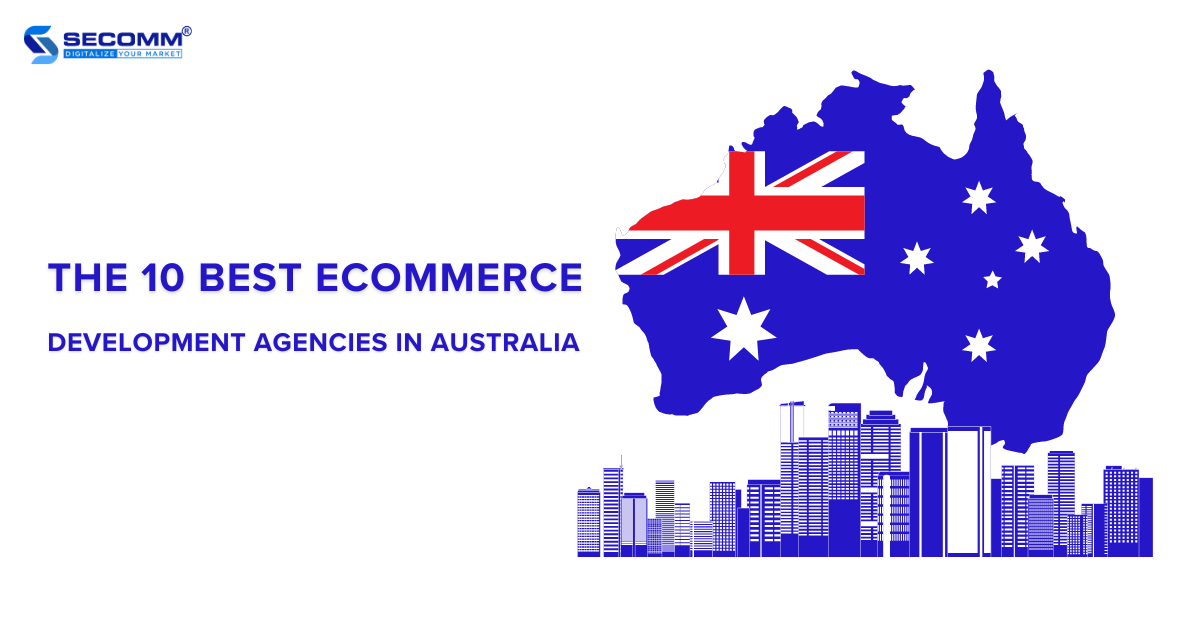
The Australian eCommerce market is vibrant and promising, and partnering with reliable eCommerce development agencies is the key to enhancing online presence. With many developers striving to impress with their superior solutions, choosing the right partner has become more challenging than ever.
In this article, let’s explore Australia’s top 10 leading eCommerce developers and the factors to evaluate a potential development partner.
Read more: Top 10 leading eCommerce websites in Australia
Here are the 4 key factors to consider when choosing a reliable eCommerce development partner that aligns with your needs. From deep market understanding to the ability to adopt new technologies, these criteria will help you make strategic decisions and achieve success in today’s eCommerce landscape.
One of the most important factors to consider when choosing an eCommerce development agency is its understanding of the Australian eCommerce market. Leading developers will have a deep knowledge of trends, competitors, target customers, and shopping behavior.
This understanding helps design and build effective eCommerce websites, from optimizing the shopping experience to implementing customized solutions that support decision-making processes for future marketing strategies.
You need to consider the agency’s platform and technological expertise to ensure they are suitable and capable of meeting the goals of the upcoming eCommerce project. Many developers focus solely on a particular type of technology and platform, while others have experience with various eCommerce technologies and platforms.
With the current eCommerce trends in Australia, most developers offer their services based on platforms such as Magento, Shopify, BigCommerce, WooCommerce, and OroCommerce.
Read more:
Top 10 Magento Agencies in Australia
Top 10 Shopify Plus Agencies in Australia
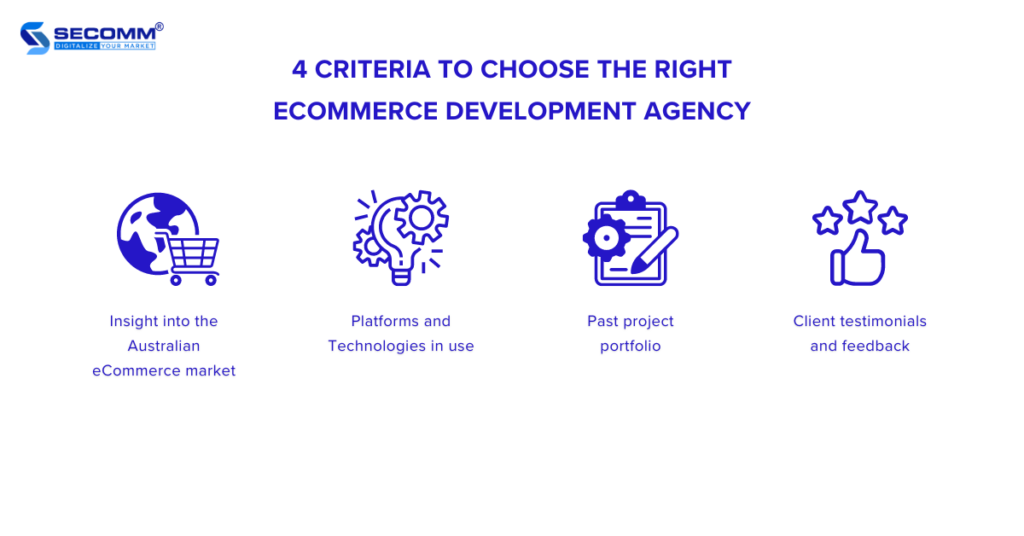
Evaluating past projects executed by eCommerce development agencies is an effective way to measure their capabilities and experience. By examining previous projects, you can assess their ability to solve specific challenges and whether the solutions proposed for each case are flexible and up-to-date with market development trends.
Previous customers are a valuable source of information for assessing an eCommerce developer’s quality and reliability. Their feedback provides genuine insight into the developer’s work experience, product and service quality, and post-deployment support capabilities. This helps you make informed and effective decisions when selecting an eCommerce development agency.
Below is a list of Australia’s top 10 leading companies in eCommerce development, ranging from pioneering innovators to reputable developers with years of experience. These developers have built and deployed hundreds of successful eCommerce projects, delivering real value to their businesses and customers.
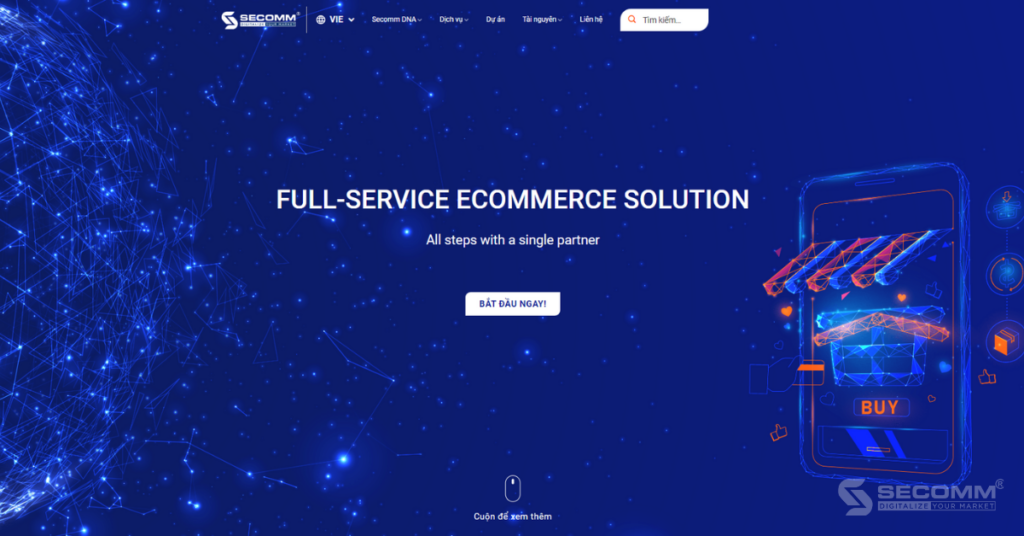
Over ten years, SECOMM has become a reliable eCommerce development agency for many Australian businesses such as Laybyland, The Rod Shop, Seconds Deals, and Trentham Estate. By providing innovative and customized solutions, SECOMM not only meets basic requirements but also goes further, creating unique and engaging online shopping experiences.
SECOMM’s strengths lie in Magento, Shopify Plus, and Headless Commerce. This team’s deep understanding of the market and strong technical expertise have enabled it to quickly grasp each project’s goals and outline detailed plans for completion with guaranteed quality and timelines.
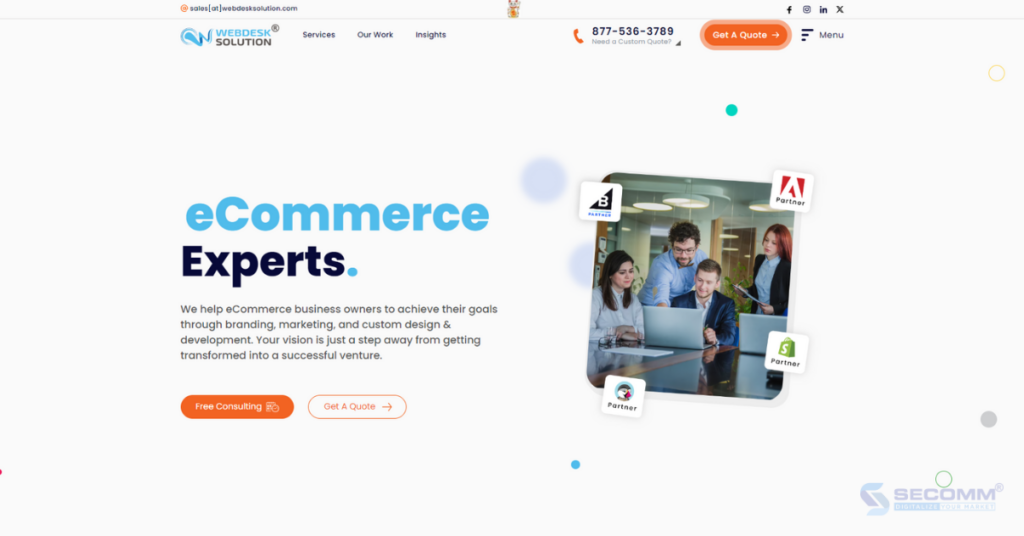
WEBDESK SOLUTION is known as a leading full-stack eCommerce developer in Australia. They utilize platforms such as Magento, Shopify, PretaShop, and Shift4Shop to deliver customized solutions to meet eCommerce deployment needs.
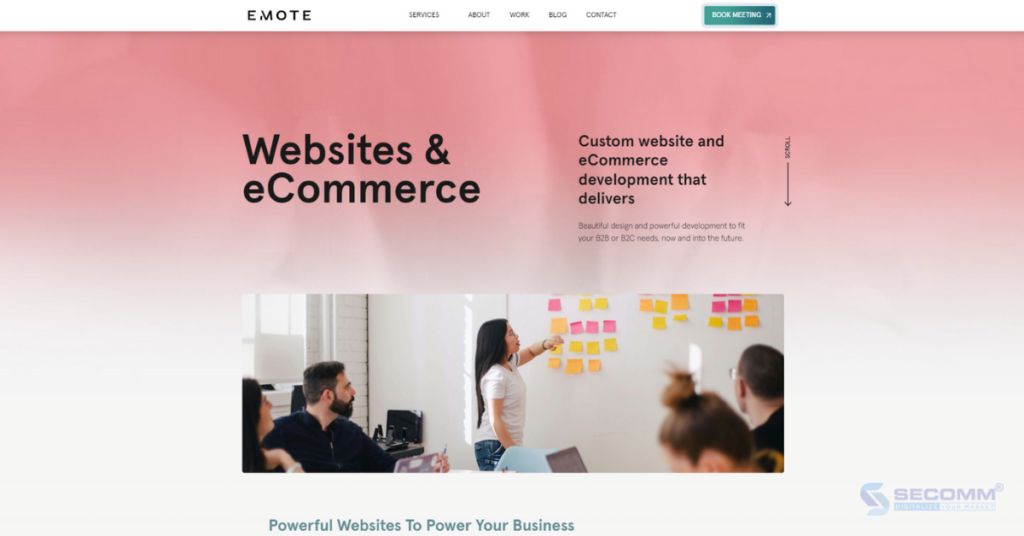
This company has built a reputation in the Australian market as a designer and developer of eCommerce websites. They use platforms like Drupal, Sitecore, WordPress, BigCommerce, Shopify, and Magento to create unique shopping experiences and genuine customer interactions.
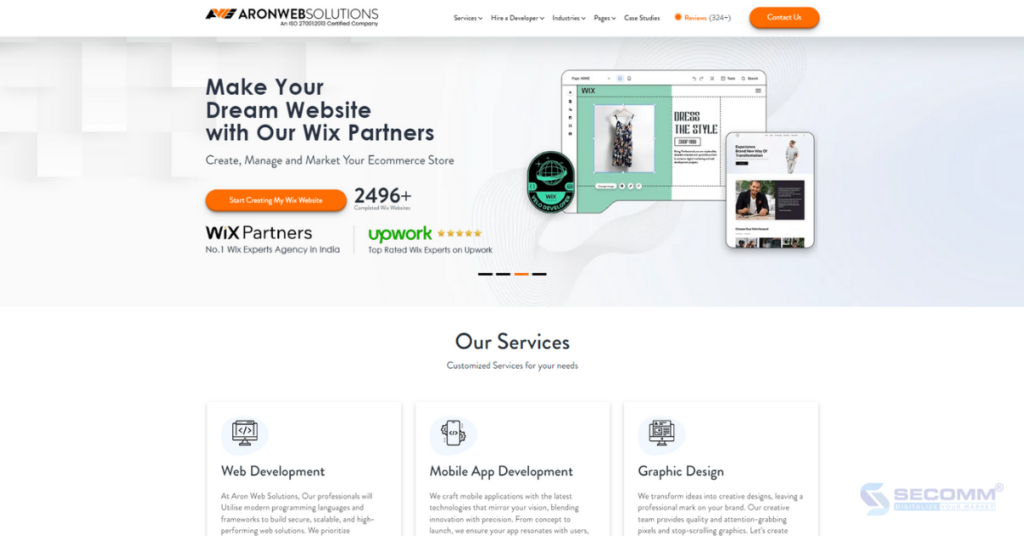
Aron Web Solutions is renowned for providing customized and professional eCommerce solutions, helping businesses optimize online performance. Aron has expanded its business operations to the UK, US, and Indian markets.
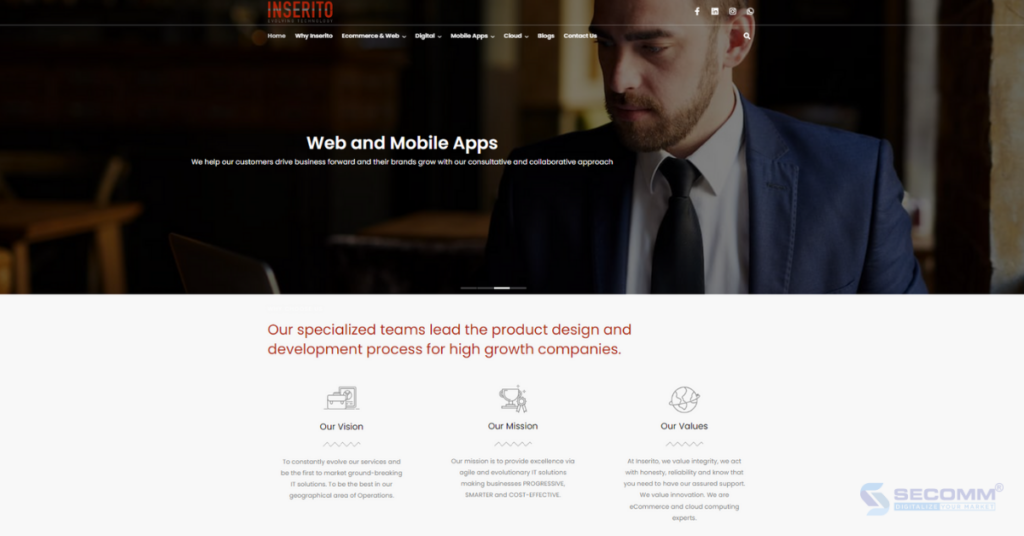
Inserito aims to develop eCommerce solutions for large enterprises based on platforms such as Magento, Shopify, NetSuite, and BigCommerce. They are committed to providing effective and sustainable solutions for businesses.
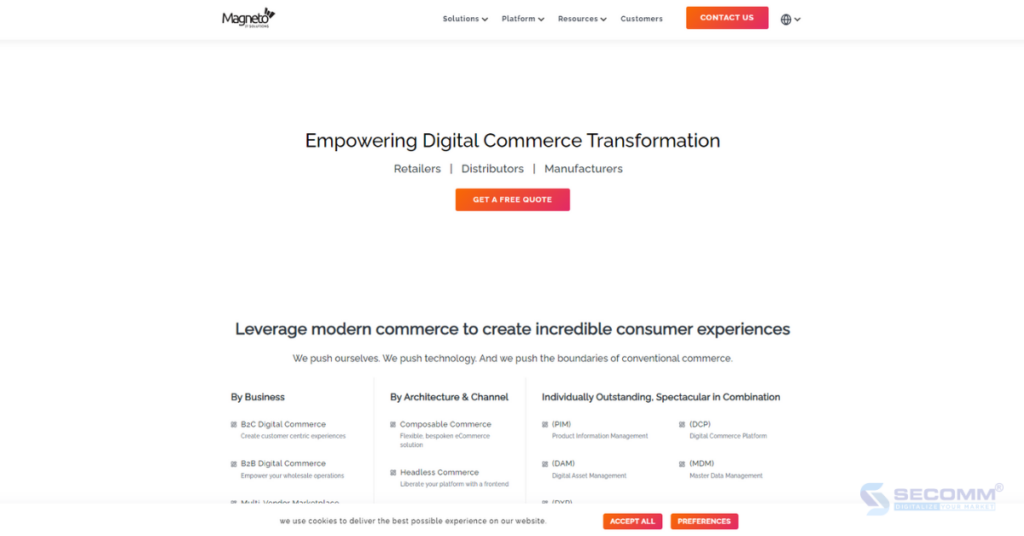
Magneto IT Solutions is an eCommerce development agency with diverse experience across industries. They provide customized and professional solutions to meet the specific requirements.
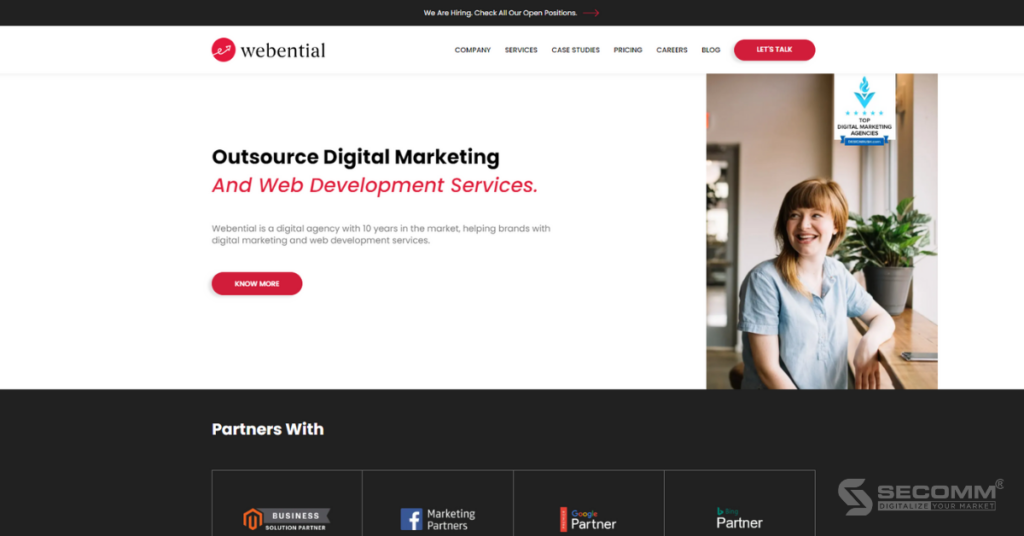
In Australia, Webential is a specialized unit that designs and builds eCommerce websites while providing related services in digital marketing. The company has a highly skilled team that proposes suitable solutions to optimize customer experience and implement effective marketing campaigns.
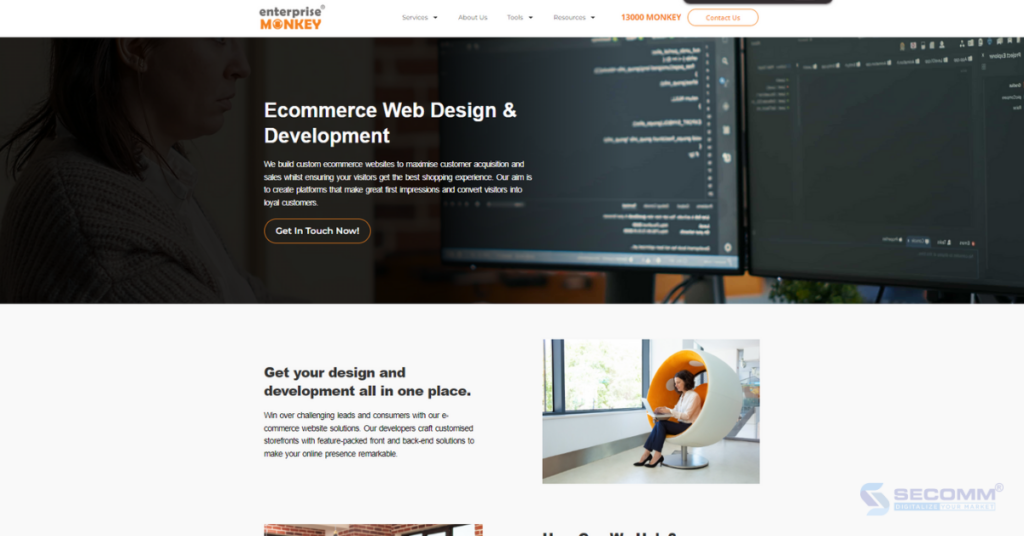
This company provides services for eCommerce businesses in Australia, from building online stores to mobile shopping applications. With its extensive experience, Enterprise Monkey can help develop customized shopping experiences using AR/VR and AI technologies.
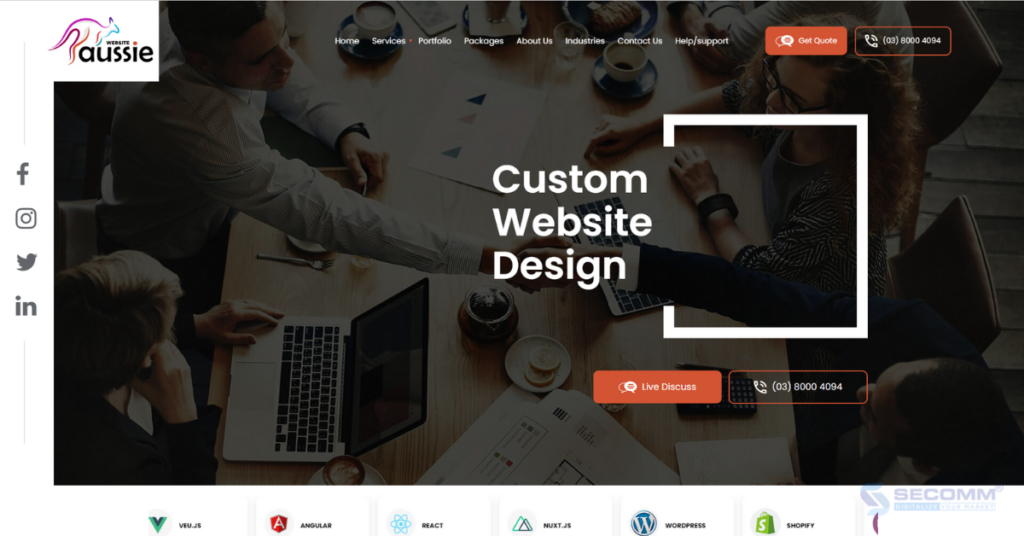
Aussie Website has established itself as a leading reputable eCommerce development agency in Melbourne city and Australia. They are committed to providing flexible and innovative solutions to help businesses optimize their eCommerce operations.
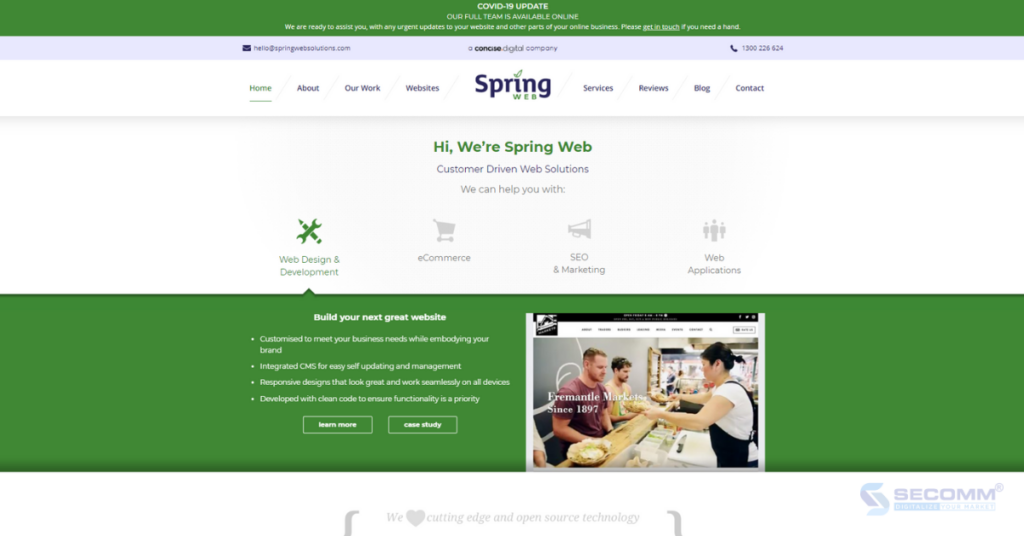
Spring Web Solutions is renowned for providing flexible and effective eCommerce solutions, helping businesses thrive online. Its technologies include Drupal, PretaShop, WordPress, Shopify, and Magento.
Above are 10 reputable and reliable eCommerce development agencies in Australia, along with essential criteria for choosing a suitable development partner. Each company offers unique characteristics and benefits to its clients, from deep market understanding to creativity and technical prowess.
Need more advice? Contact SECOMM or call (+84)28 7108 9908 for a free consultation!
 2
2
 1,696
1,696
 0
0
 1
1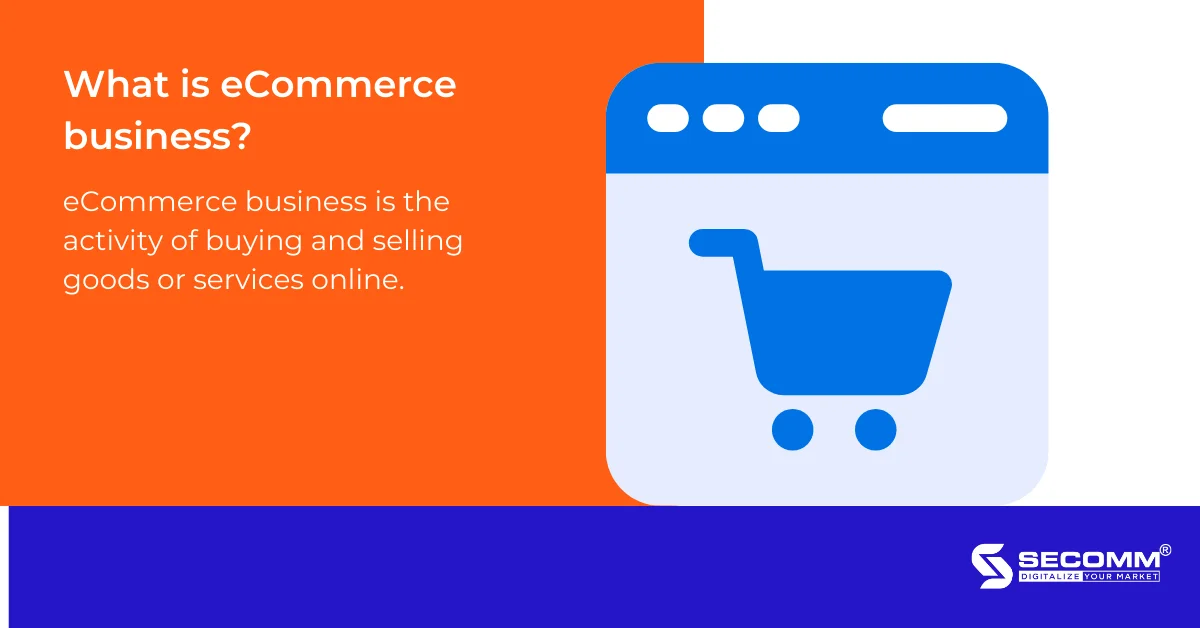
For businesses that are just entering the market, the term “eCommerce” is often recognized through eCommerce marketplaces. Most managers are often unsure of where to start, including which systems to use, which eCommerce platform to choose for development, and what steps to take next.
Therefore, in this article, SECOMM will share comprehensive information from basics to advanced levels to kickstart eCommerce business in Vietnam.
According to Decree No. 52/2013/ND-CP on eCommerce: “eCommerce activities involve conducting all or part of the commercial process through electronic means connected to the Internet, mobile telecommunications networks, or other open networks.”
In simpler terms, eCommerce business is the activity of buying and selling goods or services online.
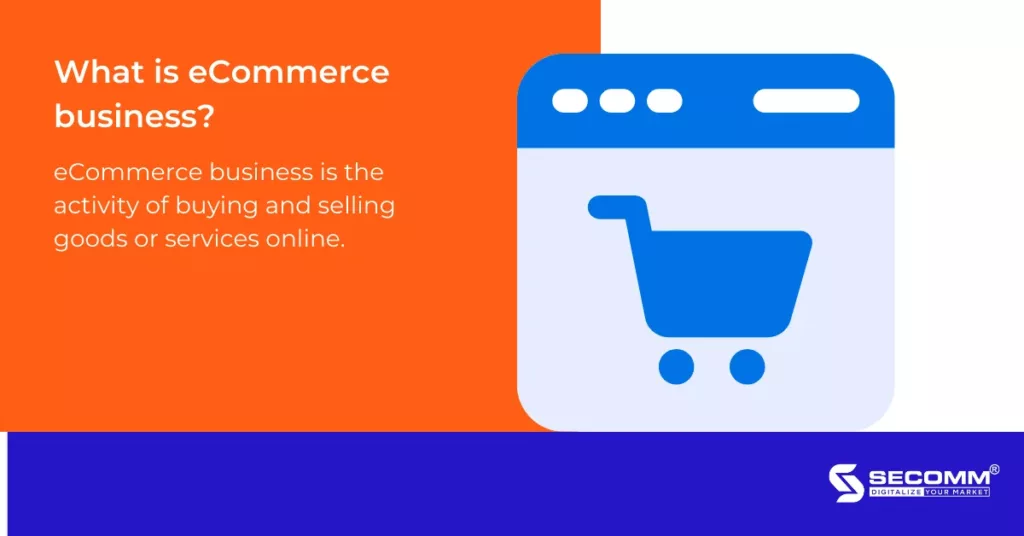
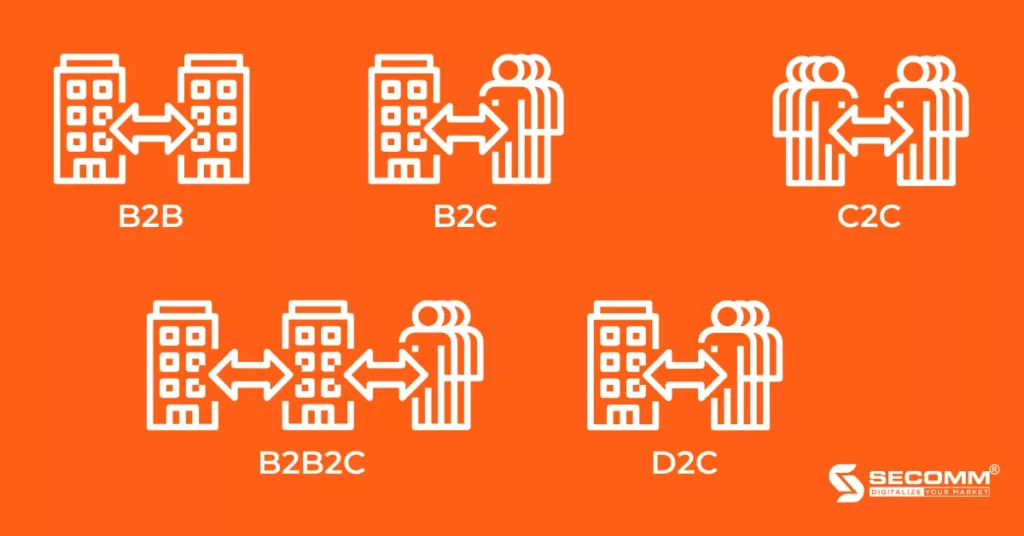
B2C (Business to Customer) involves transactions between businesses and customers. This is also the most common model in the Vietnamese market.
Example: Thế Giới Di Động is the number one retail model in Vietnam’s eCommerce market for devices such as phones, laptops, tablets, and accessories.

B2B (Business to Business) involves commercial transactions between two businesses.
Example: TELIO is Vietnam’s first B2B eCommerce platform, facilitating the connection between small-scale traditional retailers and brands by aggregating demand, providing more choices, better prices, and more efficient logistics support.

B2B2C (Business to Business to Customer) is a business model that involves collaboration between two businesses (B2B) to create and deliver products or services to end consumers (B2C).
Example: Shopee is the most popular eCommerce platform in Vietnam. Shopee Vietnam initially operated under a C2C model, serving as an intermediary in the buying and selling process between individuals. However, Shopee Vietnam has evolved into a B2B2C hybrid model by offering various services and conveniences to support the shopping process for both businesses and consumers.
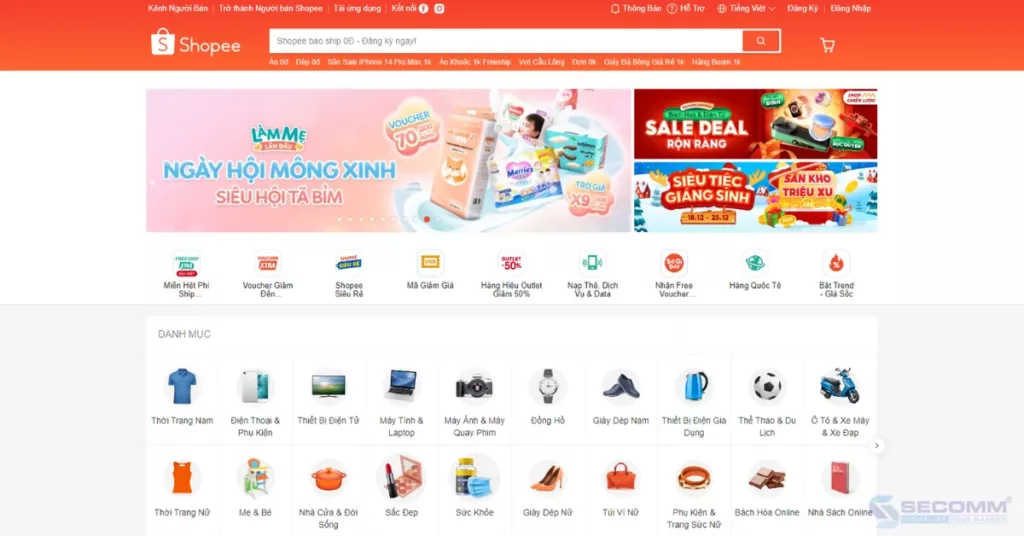
C2C (Consumer to Consumer) is a form of business where transactions occur directly between two individuals rather than involving businesses.
Example: Chợ Tốt is an eCommerce website that facilitates transactions between individual sellers and buyers for items such as real estate, cars, job postings, used electronics, pets, and various home services.

D2C (Direct to Customer) is a business model that delivers products directly from the business to the customer, bypassing intermediary distribution channels.
Example: Coolmate is a men’s fashion startup established in 2019. Within just 2 years of operation, the brand raised a rapid $500,000 in funding for Sharktank.
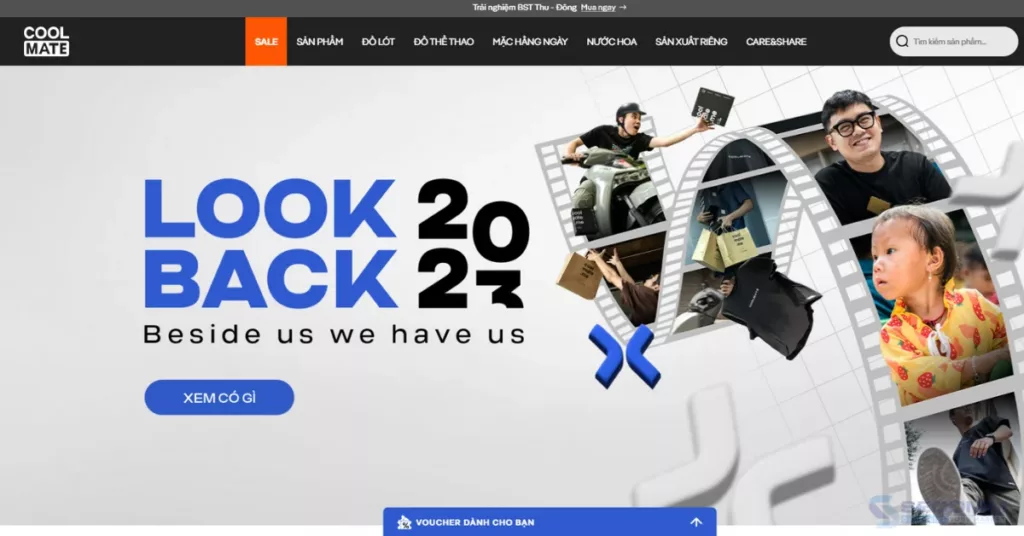
When starting to plan a business, the first step that managers should take is market research to understand the overall market situation, details about competitors, trends, and consumer behaviour. Some free and reputable sources businesses can refer to include the White Paper on eCommerce in Vietnam by IDEA, the e-Conomy SEA report by Google & Temasek, the eCommerce Index report by Vecom, etc.
After conducting market research, the next thing businesses should pay attention to is defining objectives, such as adding sales channels to increase revenue, positioning the brand in the eCommerce market, supporting marketing campaigns, enhancing user experience and interaction, etc.
Following market research and goal setting, businesses should also budget and plan the implementation timeline for each stage of eCommerce operations. Depending on the goals and strategies, each business will set budgets and timelines for the most effective eCommerce operations.
Next, businesses need to choose an eCommerce platform to build a system that aligns with the brand’s scale and strategy. The components of an eCommerce system typically include a website and an eCommerce website application.
There are two main types of platforms nowadays: SaaS (Software as a Service) and Open Source.
For Open Source platforms:
For SaaS platforms:
Once the eCommerce platform is selected, businesses have two options for resources to build the website: building an in-house team or using services from developers.
For building an in-house team, businesses need to recruit and train IT and eCommerce professionals with expertise and experience on the chosen platform. This process may take time and budget to build a suitable team but provides better control over resources, allowing adjustments or developments according to specific requirements.
For collaborating with development firms, businesses should seek developers based on criteria such as deep experience in eCommerce, an experienced team, a clear process, quick handling and support, and commitments to warranty and maintenance. This approach helps businesses gain professional expertise, enhance experience, and develop a suitable website.
In the eCommerce market, there are various payment methods, with Cash on Delivery (COD) being the most common. However, due to the rise of “cashless” payment trends amid the Covid-19 pandemic, electronic payment methods are gaining more prominence.
Some payment methods chosen by eCommerce businesses include:
Usually, a fulfilment process includes the following steps: Importing goods or manufacturing → Shipping to warehouse/distribution centre → Warehousing → Processing goods upon request (Shipping, invoicing, packaging, labelling) → Delivery → Handling post-sale requests (Returns, refunds, exchanges).
Therefore, a comprehensive eCommerce system needs to build or integrate functionalities such as eLogistics, blockchain, QR codes, etc., to automate the shipping process, track orders, and thereby enhance the quality of delivery to end consumers.
A Customer Relationship Management (CRM) system is an essential component in the operation of eCommerce businesses. Building and continuously improving the CRM system, as well as implementing a multi-channel customer care centre, helps expedite the processing of complaints, returns, and refunds. Additionally, a CRM system assists businesses in gaining insights into customer needs, facilitating the establishment of interactions between the brand and its customers.
Maintaining the eCommerce system 24/7, continually updating and upgrading it helps businesses promptly address arising issues, achieve sustainable sales growth, and adapt quickly to the ever-changing market. Simultaneously, continuous monitoring and maintaining eCommerce operations aim to prevent risks from hackers, data breaches, etc.
One of the crucial strategies in current eCommerce operations is omnichannel selling. By following customers’ “footprints” across eCommerce platforms (Shopee, Lazada, Tiki, Sendo), social media (Facebook, TikTok, Instagram, Zalo), websites, and eCommerce apps, this strategy centralizes customer data, reaches diverse shopping behaviours, and optimizes personalized experiences in the eCommerce system. Additionally, various eCommerce marketing campaigns are being developed, such as Affiliate Marketing, Shoppertainment, SEO, Email Marketing, etc. This strategy optimizes brand visibility and boosts online sales.
Building reporting functions to exploit the efficiency of data, including reports on Sales, Marketing, Customers, Inventory, and Operational Performance, to improve and enhance business efficiency. Integrating analytical tools such as Google Analytics, Facebook Pixels, Microsoft Power BI, etc., supports tracking and measuring system performance to provide detailed reports on business results in eCommerce.
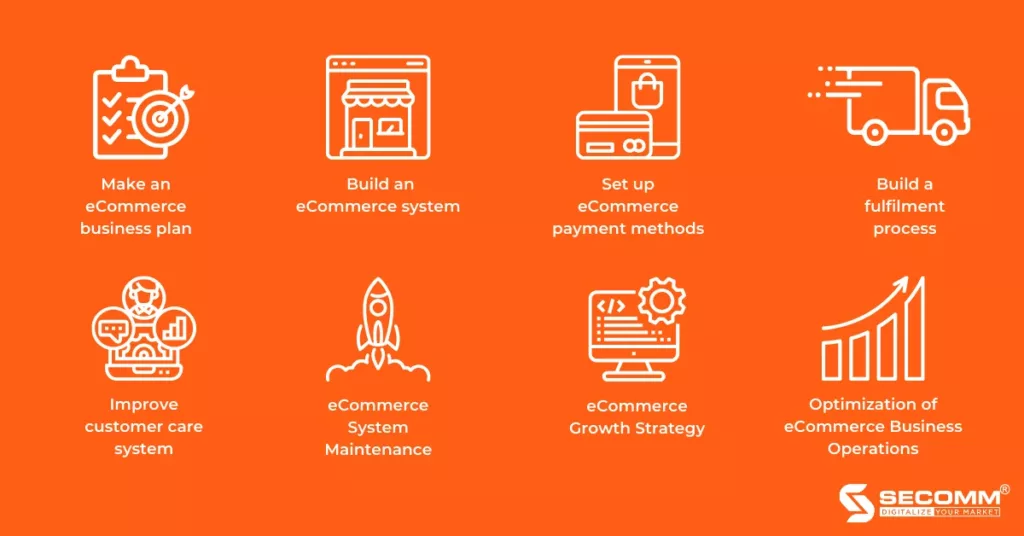
In summary, conducting eCommerce based on the above 8 steps is not an easy task for business managers. To stay competitive in the eCommerce race, various factors come into play, including financial strength, human resources, the general economic situation, changes in consumer behaviour, etc. Therefore, managers need to be cautious when making critical decisions to bring business efficiency.
With over 9 years of experience in designing complex eCommerce systems for companies like Annam Gourmet, Laybyland, and Jasnor, SECOMM understands the challenges businesses face in researching and efficiently implementing eCommerce.
Contact SECOMM now for free consultation on detailed eCommerce system development solutions!
 2
2
 16,056
16,056
 0
0
 1
1
SECOMM is a trusted provider of full-service ecommerce solutions. Founded in 2014, we’ve been helping growing brands, and renowned companies get a steady foothold in the ecommerce space.
We enable our partners to overcome any challenges brought by the evolving digital age through expertise and innovation.
Today, we’re honored to announce that we’re among the top B2B companies on Clutch in Vietnam. The ratings and reviews platform’s 2022 research states that we’re one of the leading ecommerce development companies in Vietnam this year.

For context, Clutch is a B2B ratings and reviews platform committed to helping small, mid-market, and enterprise businesses connect with capable service providers. Clutch serves as a valuable resource to businesses when it comes to market research. The platform guarantees unbiased information by interviewing clients of registered vendors directly.
Take a look at some of the 5-star ratings we’ve recently acquired:
“The professionalism of the company is second to none! They are extremely responsive, and their communication is concise and informative.”
— Rick Thurlow, Senior Business Manager, Jasnor (Australia)
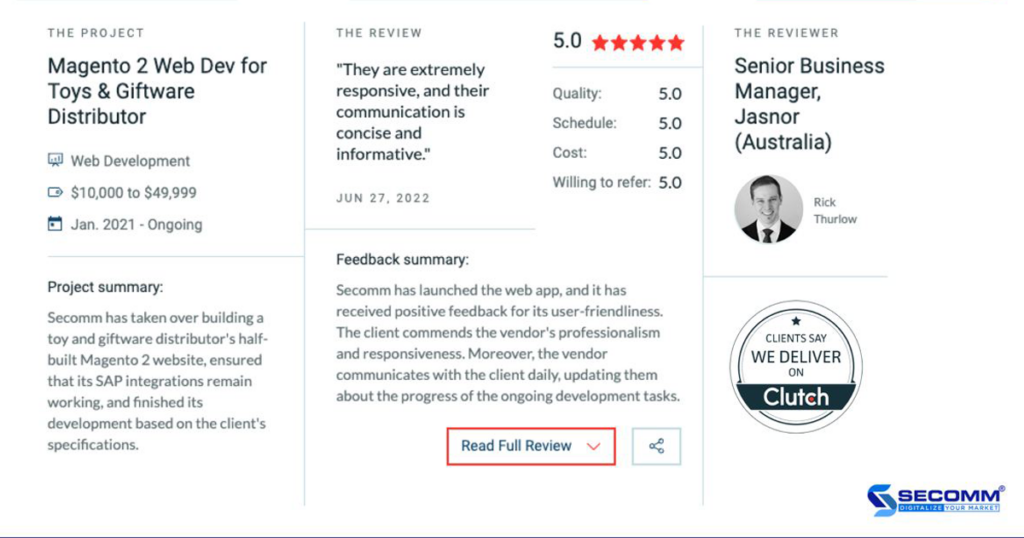
“I think the best thing about working with SECOMM is how quickly they can respond to a change you would like them to implement or to fix an error that you identify.
Even when it came to us changing things on this project that weren’t in the original scope, they would talk that change through with us to identify the best way of handling it, and then implement that change in a timely manner.”
— Stuart Duff, Founder & CEO, Laybyland Pty Ltd
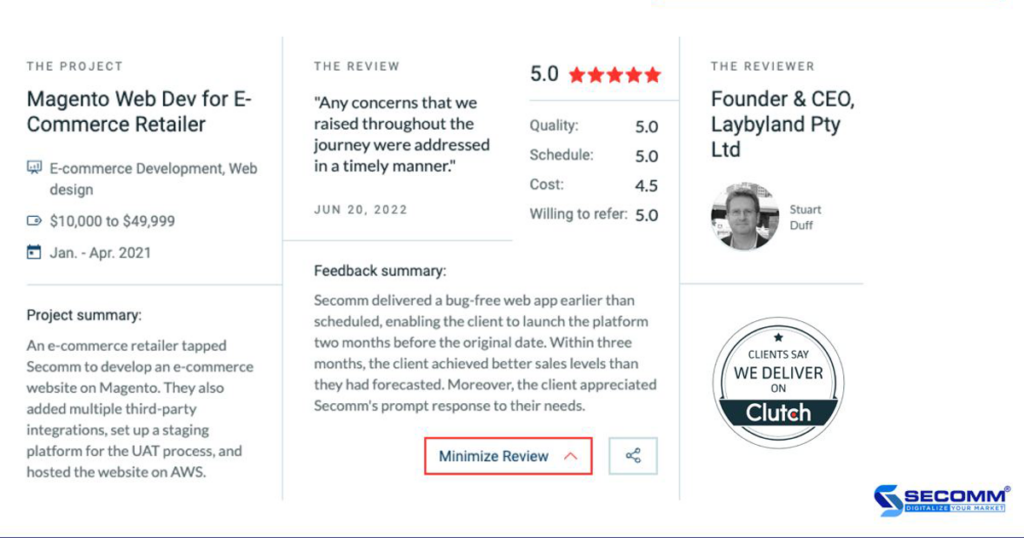
We would like to thank our partners who took the time and effort to write their descriptive, helpful feedback about our work. Don’t forget to check out the full case studies on our Clutch profile.
For inquiries about our full-service ecommerce development, please get in touch with us today!
 2
2
 8,260
8,260
 12
12
 1
1Subscribe to get the latest eBook!
Hotline